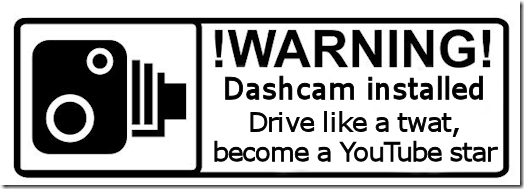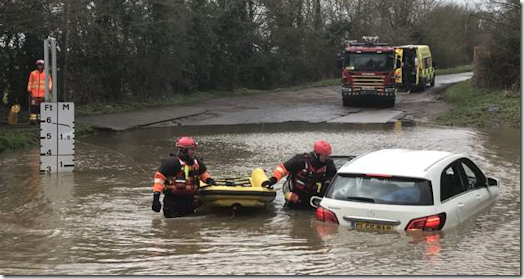This article was originally written in 2011 after someone asked if it is OK for the ABS to kick in when you do the emergency stop on your test (and in real life).
DT1 – DVSA’s Internal Guidance Document – says:
ABS – Anti-lock braking system.
Note: Anti-lock braking systems (ABS) are being fitted to an increasing number of vehicles. Examiners should not enquire if a vehicle presented for a test is fitted with ABS.
Most ABS systems require the clutch and footbrake to be depressed harshly at the same time to brake in an emergency situation; therefore a fault should not be recorded purely for using this technique with a vehicle fitted with ABS on the emergency stop exercise. On the emergency stop exercise, under severe braking, tyre or other noise may be heard, this does not necessarily mean the wheels have locked and are skidding. Examiners should bear these points in mind when assessing the candidate’s control during this exercise. Further advice regarding ABS is given in the DVSA publication ‘driving the essential skills’.
Driving: The Essential Skills (TES) says this concerning ABS systems:
…You should refer to the owner’s handbook for details of the manufacturer’s recommended method of use…
More on what TES says about emergency braking later. Let’s take a look at some typical (and common) owner’s handbooks.
Vauxhall Corsa
For optimum braking, keep the brake pedal fully depressed throughout the braking process, despite the fact that the pedal is pulsating. Do not reduce the pressure on the pedal.
Do not let this special safety feature tempt you into taking risks when driving.
Traffic safety can only be achieved by adopting a responsible driving style.
Vauxhall Astra
Antilock brake system (ABS) prevents the wheels from locking.
ABS starts to regulate brake pressure as soon as a wheel shows a tendency to lock. The vehicle remains steerable, even during hard braking.
ABS control is made apparent through a pulse in the brake pedal and the noise of the regulation process.
For optimum braking, keep the brake pedal fully depressed throughout the braking process, despite the fact that the pedal is pulsating. Do not reduce the pressure on the pedal.
Ford Focus
Using ABS
When hard braking is required, apply continuous force on the brake pedal. Do not pump the brake pedal since this will reduce the effectiveness of the ABS and will increase your vehicle’s stopping distance. The ABS will be activated immediately, allowing you to retain steering control during hard braking and on slippery surfaces. However, the ABS does not decrease stopping distance.
Ford Fiesta
Using ABS
When hard braking is required, apply continuous force on the brake pedal. Do not pump the brake pedal since this will reduce the effectiveness of the ABS and will increase your vehicle’s stopping distance. The ABS will be activated immediately, allowing you to retain steering control during hard braking and on slippery surfaces. However, the ABS does not decrease stopping distance.
The message is quite clear: LET ABS DO THE WORK, AND DON’T TRY TO OVERRIDE IT.
Whether the ABS kicks in or not is down to many factors. A controlled stop that won’t engage the ABS in dry conditions on a clean and level surface will almost certainly engage it in the wet on a slight declination. Even on the flat, a bit of dust or gravel will change the physics completely. And on snow or ice, the ABS will kick in as soon as you touch the brake whether you want it to or not. It’s up to the examiner at the time to decide if the stop was prompt enough to be labelled as satisfactory.
If the test candidate stamps on the brake with all their might, causes the examiner to head butt the roof, and scuds to a halt over less than a metre from speed of 30mph, then the examiner just might consider it to be “not controlled”. But the ABS kicking in short of this is not a fault in any way.
TES goes into more detail after having advised checking the car’s owner’s manual. It deals with the issue on the premise that the ABS should be allowed to do the work.
How do you do the emergency stop?
At the prompt (when the examiner says “STOP” and raises his hand; or when in real life – for example – that woman with the pushchair walks out in front of you):
- brake firmly and progressively (i.e. apply more and more pressure) to stop in the shortest distance safely
- put the clutch down just after you brake
- keep your bloody hands on the steering wheel up to this point!
- once you’ve stopped, apply the handbrake and put it in neutral
- take a look around and rest your feet
In reality, you’ll brake hard and declutch very soon afterwards – almost (but not quite) simultaneously. There’s no messing about with stopwatches and stuff! You just do it. But what things are classed as potentially serious faults during the stop?
- responding too slowly
- putting the clutch down before the brake
- putting the handbrake on before you’ve stopped
- skidding out of control
- missing the brake pedal
- taking your hands off the steering wheel
Notice how “stalling” isn’t on there. As long as you put the handbrake on and put it in neutral if you stall, then restart the engine, you shouldn’t worry – but obviously, don’t stall deliberately. Learn to do it properly.
Putting the clutch down too soon can cause the car to surge forward if you’re going downhill (on the level, it’ll simply not slow down), then the brakes have to do more work. This results in longer stopping distances. Make sure your method allows the brakes to engage before the clutch is disengaged.
When moving off – when told to do so by the examiner – get it in gear, get ready, and look all around. That’s over BOTH SHOULDERS and the mirrors. You can fail for not looking around properly before driving away.
Just to summarise one more time, though:
- when that woman with the baby in the pushchair walks out in front of you after you pass your test, you will hit the brakes as hard as possible to avoid hitting her
- you won’t give a flying toss whether the ABS kicks in or not – because you don’t need to
- you want to stop over the shortest distance, so don’t put the clutch down before the brake
- on your test, the examiner wants to see you demonstrate this simple skill by stopping quickly and in control when he tells you to
- there is a big difference between doing it on test and doing in real life (e.g. to avoid the woman with the pushchair)
- if your car has ABS, it is there to help you. Let it!
- DVSA says you should do it this way
- your vehicle handbook almost certainly says to do it this way (check!)
- if someone is telling you otherwise, they are telling you wrong
Does ABS kick in if you hit the brake hard?
Not automatically – or rather, not as an immediate result of hitting the brake pedal. ABS kicks in when the wheels are locked, and allows them to move slightly. By hitting the brakes hard, if the wheels lock – and the car starts to skid – then ABS will kick in. However, if you hit the brakes just as hard and the car stops without skidding then the ABS will not kick in.
It is locked wheels which trigger the ABS, not the act of braking by itself.
Should I put the clutch down at the same time as the brake?
The blog has been getting hits from www.pistonheads.com (hi guys) as a result of a thread asking precisely this. As DVSA guidelines say, doing so is not automatically a fault – but it depends.
The problem with wording stems from the older method of cadence braking (on non-ABS vehicles), where you had to pump the brake pedal and slow down in stages, then put the clutch down at the end to avoid stalling. In this older situation, you did not “press both pedals at the same time”. The thing you have to remember is that the clutch will begin to release as soon as you start to press the pedal, and the brakes will start to bite as soon as you start to press them. Neither are digital switches – they are analogue devices, which means that there is significant travel of the pedals to achieve varying amounts of the relevant effect. So if the clutch releases more than the brakes are braking, the car will take longer to stop because the effect of engine braking is removed. For that reason, you really want to be braking hard first, then depressing the clutch a fraction of a second later when executing an emergency stop in a car which has ABS.
If you put the clutch down first, the car will free-wheel (or surge forward if going downhill), and the brakes will subsequently have to do all the work (and a lot more of it!). At the very least, you’ll stop over a longer distance, and that is no good for the woman with the pushchair you were reacting to. We can easily say that you must not de-clutch first.
If you hit the clutch and brake at exactly the same time it is highly likely that you will release the clutch plates before the brakes have started to grip significantly – and it will vary from car to car depending on clutch wear and pedal adjustment. In a panic situation this could easily lead to a longer stop.
So, common sense would suggest that you brake first, and then de-clutch (as per the advice in TES). This makes sure the brakes are starting to act before engine braking is lost by separating the clutch plates. Unless your vehicle handbook says otherwise, leave de-clutching for as long as possible to increase the amount of engine braking available during the braking phase.
The simple solution as far as training new drivers goes is to teach them to brake firmly, then put the clutch down. During an actual stop the two operations happen so quickly that they are virtually simultaneous anyway – but not so simultaneous that de-clutching affects the braking operation.
As long as the brakes have purchase, de-clutching will not attract a fault from an examiner if a satisfactory controlled stop is effected.
It’s easier for pupils to press both pedals simultaneously
I don’t teach my own pupils necessarily what’s “easiest” for them. I teach them what’s “best” or “safest”. Every single one of them has been able to do it the way I want them to after a few tries. Every single one. It is not a complicated process.
If you think “easiest” is better than “safest”, you need to have a word with yourself.
Do you fail if the ABS kicks in?
No. DVSA doesn’t say that anywhere. They will not fail someone just because the ABS engages during a controlled stop.
Do learners find the emergency stop difficult when taught “the DVSA way”?
No. To start with, there is no “DVSA way”. It makes perfect sense to brake first then de-clutch a fraction of a second later, and it’s the easiest thing in the world for most people to learn. DVSA’s TES is simply highlighting the best way.
Why not teach people to brake and de-clutch at the same time?
The method in TES says to brake first and de-clutch later. As long as this doesn’t go against the manufacturer’s recommendations (as DVSA correctly points out) then it is the best method. There is absolutely nothing wrong with the method outlined in TES. Furthermore, I have yet to see any manufacturer advise simultaneous braking/de-clutching – when they say to press the pedals at the same time, they just mean not to use the old cadence braking method.
The biggest danger of simultaneous pedal-dipping is that the clutch gets released before the brakes take hold. Obviously, this is extremely dangerous to the point of being potentially fatal if it causes you to stop over a longer distance.
How do you engage the ABS in an emergency stop?
The ABS is something that engages when it needs to. You don’t set out to make it operate. It will kick in if the wheels start to lock making it possible to maintain some steering control during the stop. When stopping in an emergency you simply brake as hard as you need to and if that causes the ABS to kick in then you just let it do its job.
The driving test only tests stopping in a straight line, but that’s not like the real world.
So what? The driving test emergency stop is making sure you can hit the brakes hard enough to stop, and do it in such a way that you stop in the shortest distance. It’s not testing you on every imaginable situation.
The bottom line is that if someone runs out just in front of you you’re going to hit the brakes and try as hard as possible to not hit them. On a bend, the risk of spinning off the road when braking hard at speed is extremely high. There’s nothing anyone can do about that – it’s the laws of physics.
DVSA is deliberately vague about how to do an emergency stop.
Nonsense. TES is a DVSA publication and it has two full pages of information about stopping in an emergency ,covering defensive driving and avoidance, ABS, and the basic routine itself. What exactly do you expect them to say?
What happens when the ABS kicks in?
Once the electronics under the bonnet detect the wheels have locked (i.e. that you’re skidding), they will release-brake-release very rapidly for you. The footbrake pedal will vibrate and you may hear a noise that sounds like you’re skidding on gravel. Just let the ABS do its job and don’t release the pressure on the brake (unless it is to help you recover from a serious skid, where the car is starting to swing out dangerously).
Is it safe to drive my [insert car name] when the ABS warning light is on?
Someone found the blog with “Ford Fiesta” inserted into the blank space.
At the very least, if the ABS isn’t working, then it won’t kick in if you have to stop suddenly, and that could result in someone dying where they might otherwise have been unharmed, since you’re more likely to skid and lose control. More relevant is the fact that since your car would fail the MoT test if the ABS is faulty, so if you were involved in an accident there is a strong possibility that your vehicle would be assessed as unroadworthy, and you could get in serious trouble.
If ABS is fitted to your car, it must work. If it doesn’t, then technically you’re breaking the Law. A faulty ABS means the brakes will still work, but the ABS won’t. So no, it isn’t “safe”.
 There’s a story on the BBC website at the moment which deals with the fact that the Passport Office has started issuing passports without “European Union” on them. It seems that they’re using up old stock, so some passports do have it, whereas some don’t.
There’s a story on the BBC website at the moment which deals with the fact that the Passport Office has started issuing passports without “European Union” on them. It seems that they’re using up old stock, so some passports do have it, whereas some don’t. Finally got there!
Finally got there! res true public opinion.
res true public opinion. If you haven’t already seen it, get on over to this petition to revoke Article 50 and remain in the EU. Sign it. And tell others about it.
If you haven’t already seen it, get on over to this petition to revoke Article 50 and remain in the EU. Sign it. And tell others about it. Wouldn’t you just love to have the guts to put one of these on your car?
Wouldn’t you just love to have the guts to put one of these on your car? See if you can get your head around this one. And you’re not even drunk.
See if you can get your head around this one. And you’re not even drunk.
